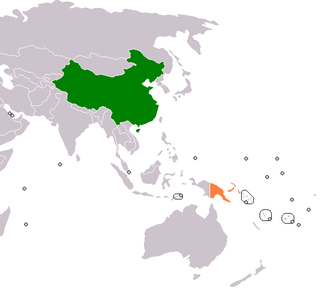Papua New Guinean literature is diverse. The emergence of written literature (as distinct from oral literature) is comparatively recent in Papua New Guinea. It was given its first major stimulus with the setting up of creative writing courses by Ulli Beier at the University of Papua New Guinea (established in 1966). Beier also founded a Papua Pocket Poets series, as well as the literary magazine Kovave , the first of its kind in the country. Some of Papua New Guinea's first noted writers, including John Kasaipwalova, Kumalau Tawali, Apisai Enos and Kama Kerpi, were first published in Kovave.
In 1932, the country's first Methodist Priest, Hosea Linge, known as "Ligeremaluoga", published an autobiography that was translated as The Erstwhile Savage. In 1968, Albert Maori Kiki’s autobiography Ten Thousand Years in a Lifetime was the first major work of Papua New Guinean literature published outside a magazine. In 1970, Vincent Eri published the first Papua New Guinean novel, The Crocodile.
Notable Papua New Guinean writers also include Russell Soaba, Ignatius Kilage, Nora Vagi Brash, Steven Edmund Winduo and Loujaya Kouza.

Papua New Guinea is a country in Oceania that comprises the eastern half of the island of New Guinea and its offshore islands in Melanesia. Officially the Independent State of Papua New Guinea, it shares its only land border with Indonesia to the west and it is directly adjacent to Australia to the south and the Solomon Islands to the east. Its capital, located along its southeastern coast, is Port Moresby. The country is the world's third largest island country, with an area of 462,840 km2 (178,700 sq mi).

Melanesia is a subregion of Oceania in the southwestern Pacific Ocean. It extends from New Guinea in the west to the Fiji Islands in the east, and includes the Arafura Sea.

German New Guinea consisted of the northeastern part of the island of New Guinea and several nearby island groups and was the first part of the German colonial empire. The mainland part of the territory, called Kaiser-Wilhelmsland, became a German protectorate in 1884. Other island groups were added subsequently. The Bismarck Archipelago, and the North Solomon Islands were declared a German protectorate in 1885. The Caroline Islands, Palau, and the Mariana Islands were bought from Spain in 1899. German New Guinea annexed the formerly separate German Protectorate of Marshall Islands, which also included Nauru, in 1906. German Samoa, though part of the German colonial empire, was not part of German New Guinea.
Edward Archibald Markham FRSL, popularly known as Archie Markham, was a Montserratian poet, playwright, novelist and academic. He moved to the United Kingdom in 1956, where he remained for most of his life, writing as well as teaching at various academic institutions. He was known for writing subtle, witty and intelligent poetry, which refused to conform to the conventions, and stereotypes, of British and Caribbean poetry alike.
Dame Josephine Abaijah, is a Papua New Guinean former politician. She was the first woman to be elected to the House of Assembly in 1972.

The culture of Papua New Guinea is many-sided and complex. It is estimated that more than 7000 different cultural groups exist in Papua New Guinea, and most groups have their own language. Because of this diversity, in which they take pride, many different styles of cultural expression have emerged; each group has created its own expressive forms in art, dance, weaponry, costumes, singing, music, architecture and much more. To unify the nation, the language Tok Pisin, once called Neo-Melanesian has evolved as the lingua franca — the medium through which diverse language groups are able to communicate with one another in Parliament, in the news media, and elsewhere. People typically live in villages or dispersed hamlets which rely on the subsistence farming of yams and taro. The principal livestock in traditional Papua New Guinea is the oceanic pig.
The Australian School of Pacific Administration (ASOPA) was a tertiary institution established by the Australian Government to train administrators and later school teachers to work in Papua New Guinea. It became the International Training Institute (ITI) in 1973 and provided management training for professionals from developing countries in the Pacific, Asia, Africa and the Caribbean. After a period as a base for consultants operating in the South Pacific for the Australian Development Assistance Bureau, it closed in late 1997.
Chief Horst Ulrich Beier, commonly known as Ulli Beier, was a German editor, writer and scholar who had a pioneering role in developing literature, drama and poetry in Nigeria, as well as literature, drama and poetry in Papua New Guinea.

Dame Alice Wedega, DBE was a Papuan politician, educator, peacemaker and conscientious objector.
Epeli Hauʻofa was a Tongan and Fijian writer and anthropologist born of Tongan missionary parents in the Territory of Papua. He lived in Fiji and taught at the University of the South Pacific (USP). He was the founder of the Oceania Centre for Arts at the USP.
Timothy Akis, born around 1944 in Tsembaga village, Simbai Valley, Madang Province, Papua New Guinea, died in 1984, was a Papua New Guinean artist. His art consisted primarily in imaginative pen and ink drawings and batiks inspired by his country's wildlife.
Kira Salak is an American writer, adventurer, and journalist known for her travels in Mali and Papua New Guinea. She has written two books of nonfiction and a book of fiction based on her travels and is a contributing editor at National Geographic magazine.

The continent of Australia, sometimes known in technical contexts by the names Sahul, Australia-New Guinea, Australinea, or Meganesia to distinguish it from the country of Australia, is located within the Southern and Eastern hemispheres. The name "Sahul" takes its name from the Sahul Shelf, which is a part of the continental shelf of the Australian continent. The continent includes mainland Australia, Tasmania, the island of New Guinea, the Aru Islands, the Ashmore and Cartier Islands, most of the Coral Sea Islands, and some other nearby islands. Situated in the geographical region of Oceania, Australia is the smallest of the seven traditional continents.

The Independent State of Papua New Guinea and China (PRC) established official diplomatic relations in 1976, soon after Papua New Guinea became independent. The two countries currently maintain diplomatic, economic and, to a lesser degree, military relations. Relations are cordial; China is a significant provider of both investments and development aid to Papua New Guinea.
Osmar Egmont Dorkin White was an Australian journalist, war correspondent and writer. He is most famous for his vivid description of the New Guinea Campaign during World War II. He also wrote under the pseudonyms Robert Dentry, EM Dorkin, and Maros Gray.
Kiki: Ten Thousand Years in a Lifetime is the autobiography of Albert Maori Kiki, a Papua New Guinea pathologist and politician.
Marjorie Tuainekore Tere Crocombe was an author and academic from the Cook Islands. She was the Cook Islands' "most venerated living author".

Keith Jackson, AM, FRSA, FAIM, is a British-born Australian journalist, blogger and retired media executive, known for his long relationship with Papua New Guinea, where he worked as a young man. He was foundation manager of two Australian radio stations, introduced educational broadcasting into the Maldives Republic, was the first head of corporate relations in the Australian Broadcasting Corporation and established a national public relations and issue management company.
The Papua New Guinea National Research Institute is a public policy and development research institute in Papua New Guinea. After independence it was established as an independent statutory authority by Act of Parliament. It absorbing other institutes in 1988, and took its current name in 1993.

Pan African Pocket Poets (PPP) was a series of 5 chapbooks published by Ulli Beier in Ife, Nigeria between 1971 and 1972. They feature works by 4 Nigerian poets, as well as John Kasaipwalova, from Papua New Guinea. The Nigerian Civil War is a common theme throughout the collection.








